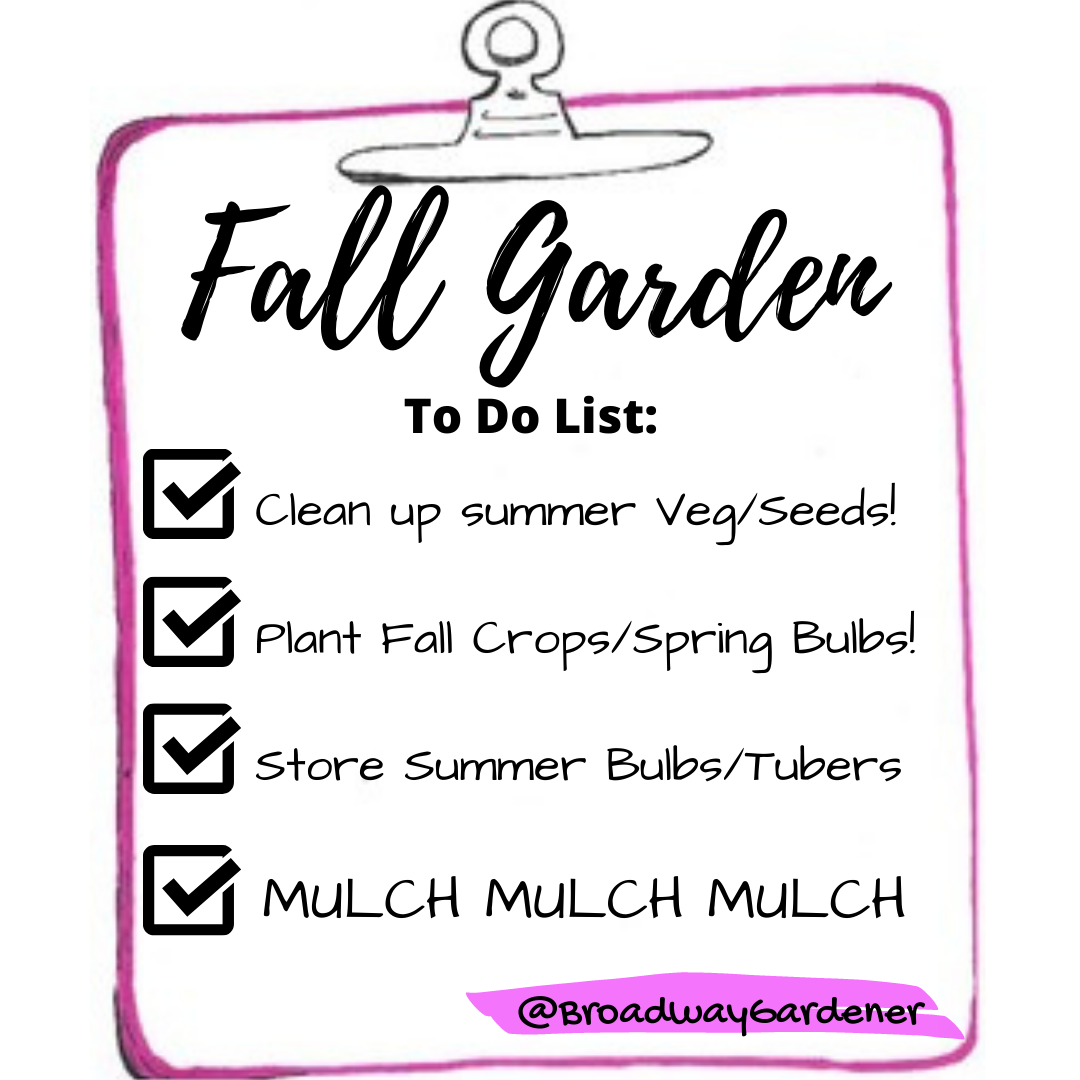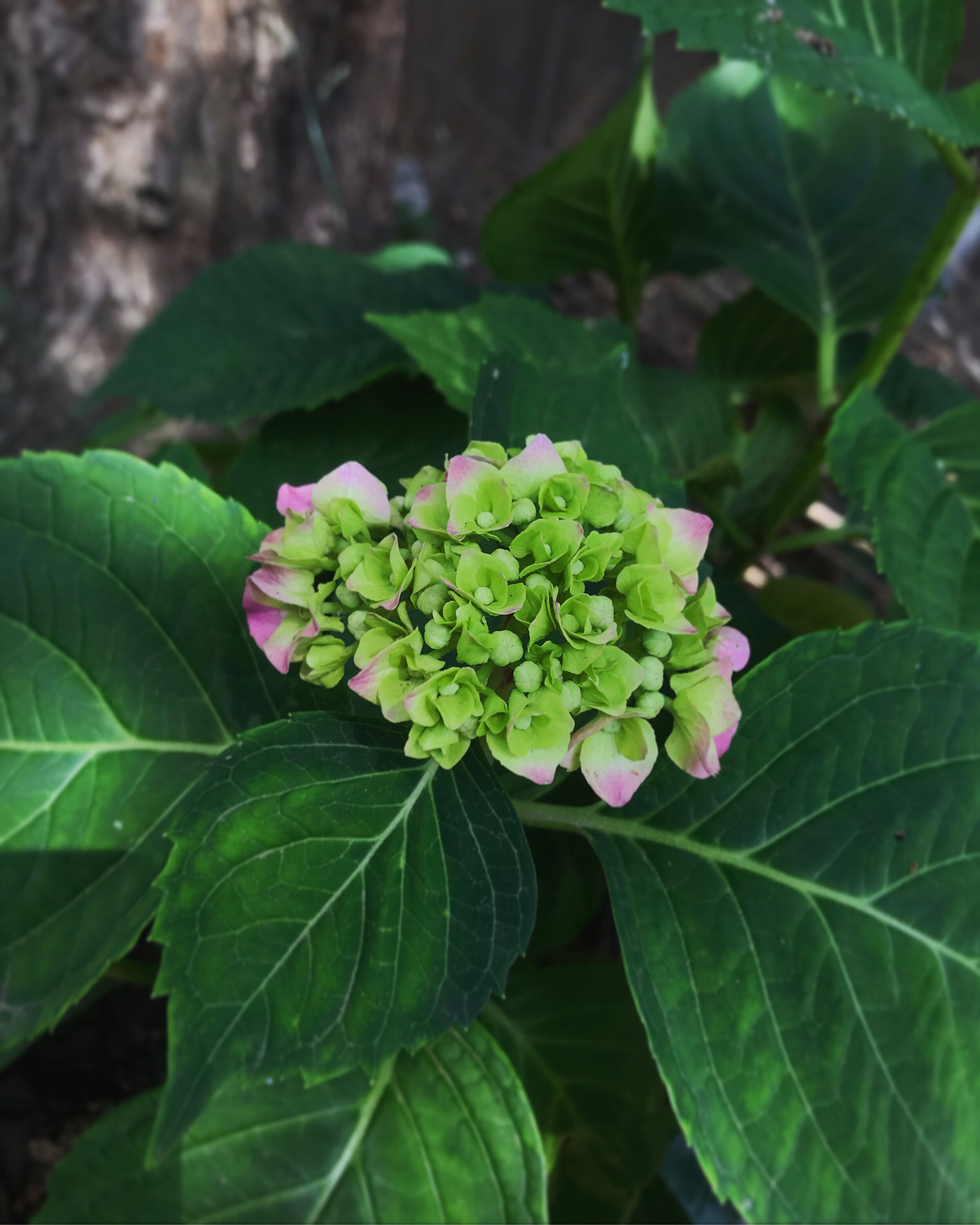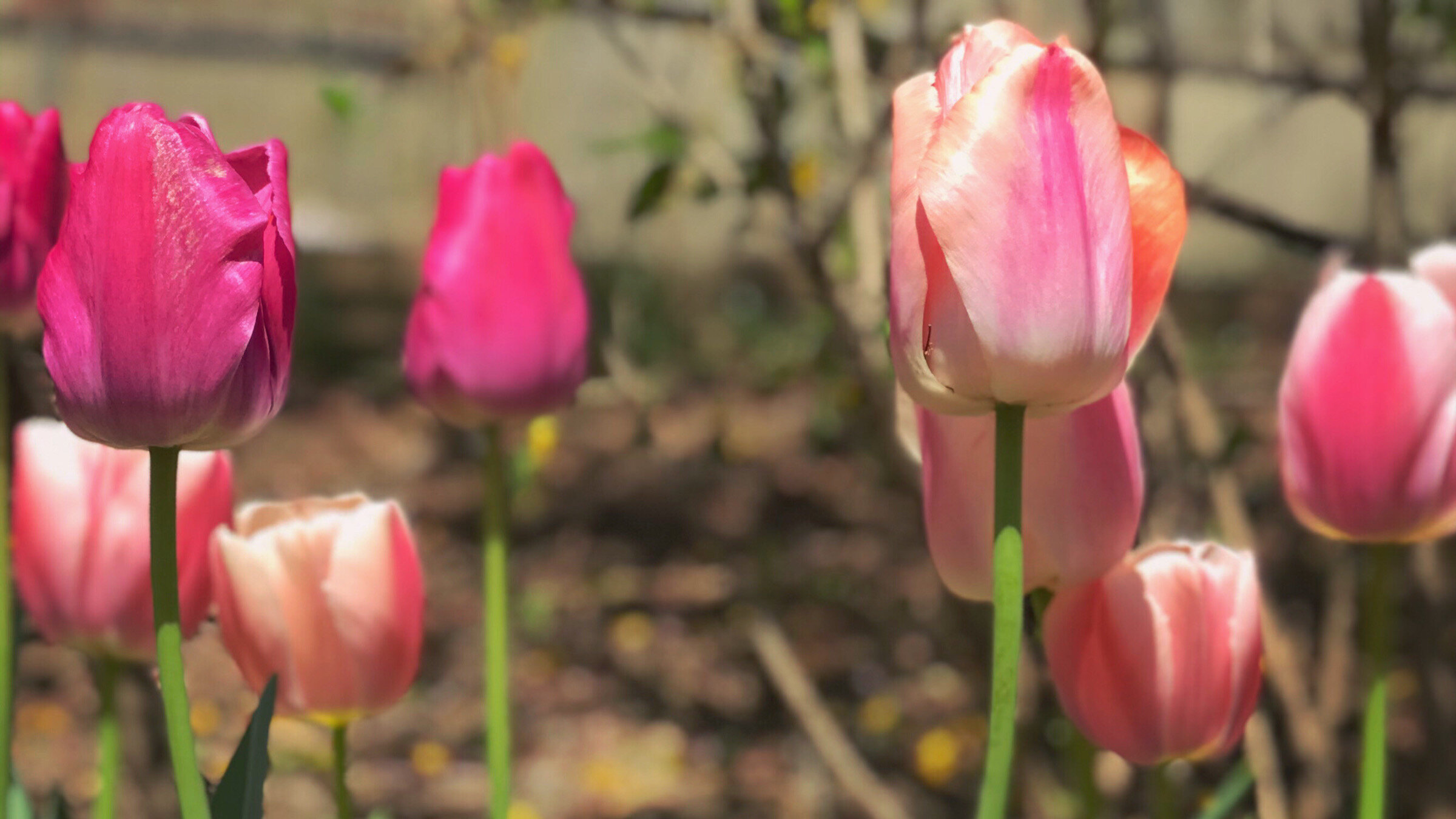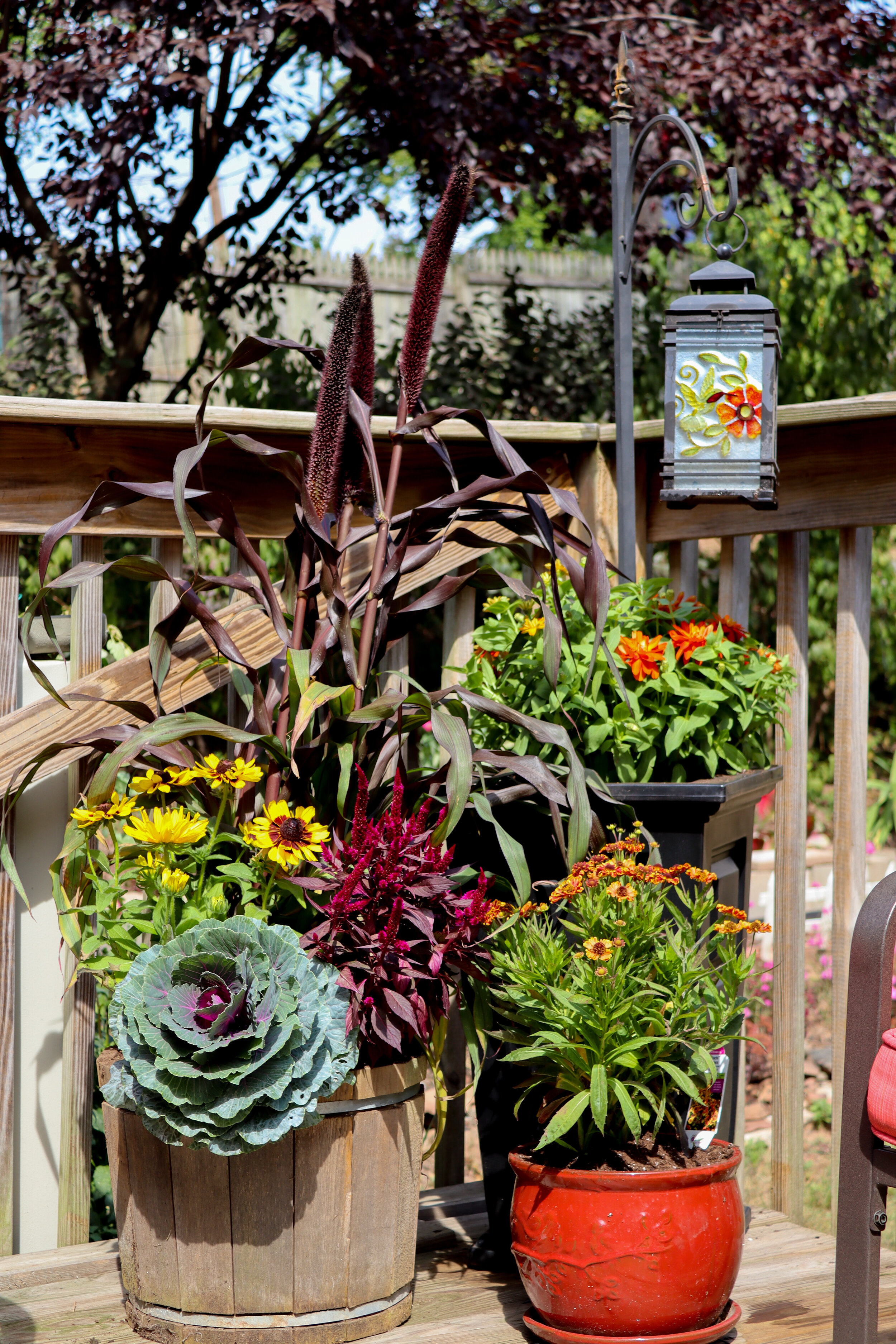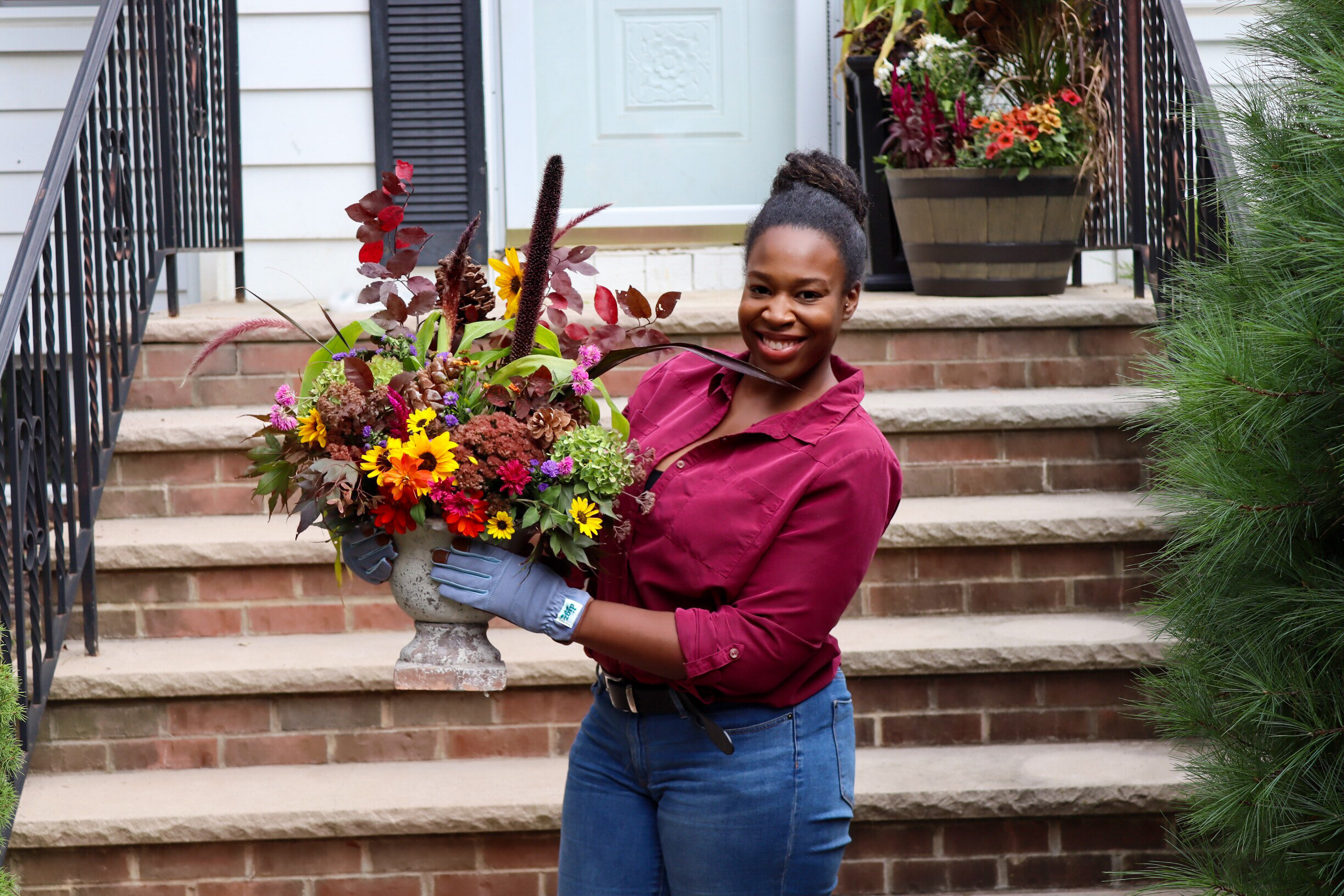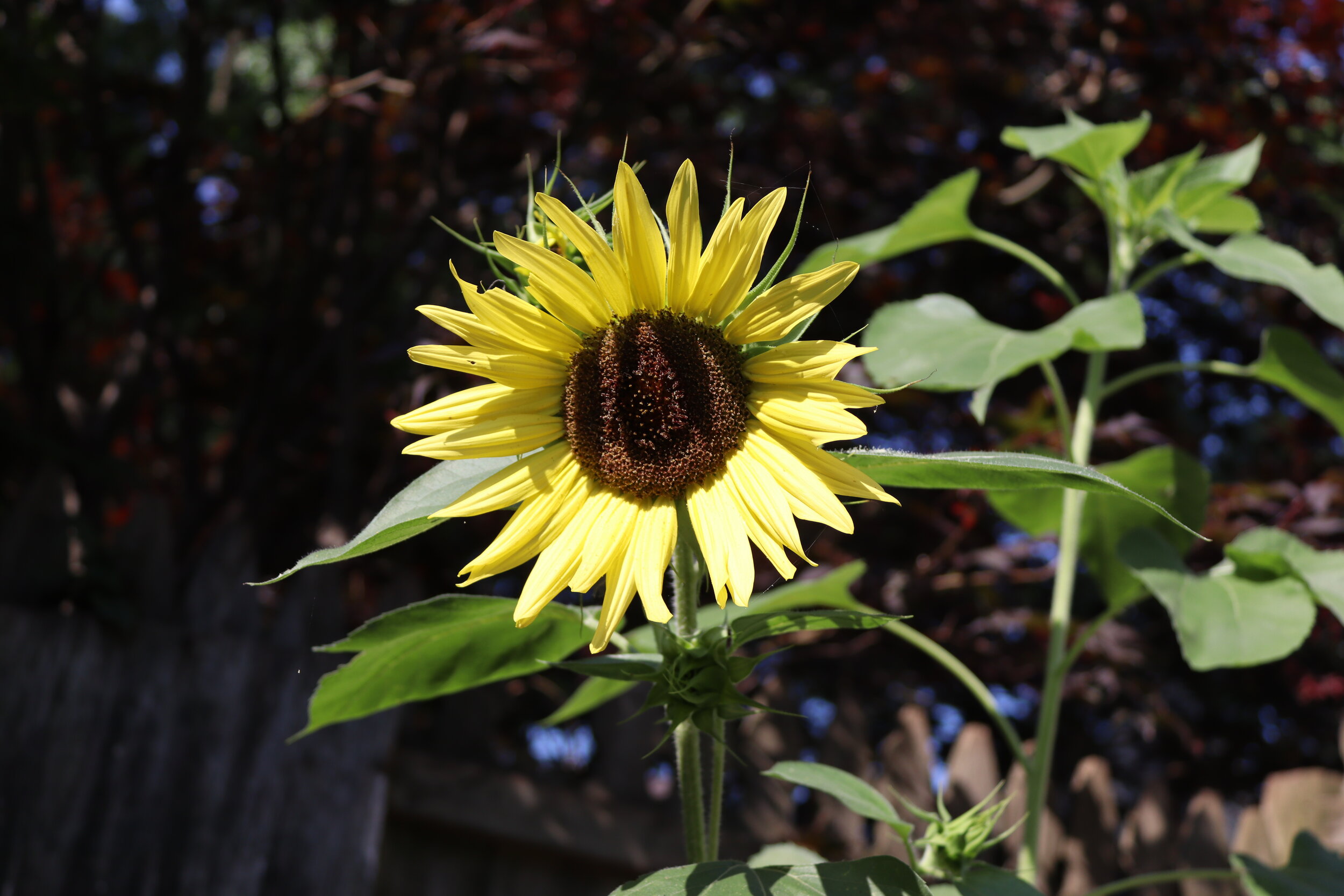Fall Garden To Do List
Here in New Jersey Zone 7b it’s time to start thinking about preparing our gardens for winter. The weather is cooling, leaves are changing, and our first frost date is creeping up.
Here are a few tasks to remember when you’re tucking your garden in for the winter.
1. Clean up your Space!
This can mean something different depending on your growing zone. For me it means, pulling spent plants from the vegetable garden, harvesting and drying herbs, and saving seeds for next years garden.
Here are a few videos detailing how I clean up my garden for fall.
2. Fall & Winter Crops
If you haven’t replenished your vegetable garden already, you should really consider planting some crops that can withstand the cold.
Lettuces, Brassicas, Garlic
Yes, it’s a little last minute to wait until October, but don’t let that discourage you. There are so many great local nurseries that carry plant starts, and I highly recommend utilizing them. You’ll thank yourself when you’re able to continue harvesting some produce during the colder months.
For those of you in my growing zone, I like to use frost guard to give my plants a little extra protection from the elements.
3. Time to Move Plants!
This is the time to divide perennials such as hostas and hucheras. Or move larger shrubs to their new homes. You’ll want to do this about 6 weeks before your first frost date to ensure the roots have enough time to establish themselves before winter.
This is also a great time to take perennials out of containers and plant them in the landscape.
I dug this Endless Summer Hydrangea up from my old garden last fall and brought it to my New Home. I'm happy to report that it bloomed beautifully this year.
4. Frost Sensitive Plants.
Switch out bulbs, Dig up tubers, and Bring in houseplants!
Early fall is the time to take care of all your frost sensitive plants. Take action if you still have Houseplants outside, or gladiolus and dahlias in the ground. They need to come back inside before the frost. Dig them up, clean them off and store them somewhere dry.
Try bringing in plants like coleus and begonias to use as houseplants. Most houseplants are tropical and will not survive a frost.
Out with the old and in with the new
While you’re covered in dirt from digging up your plants, bulbs, and tubers, think about throwing in some spring bulbs.
Spring bulbs such as daffodils and tulips need a chilling period, so you’ll want to be sure to get them in before the ground freezes for winter. Come Spring, you’ll be glad you did!
Here is a video showing how I dig, clean, and store my bulbs for winter.
5. Mulch Mulch Mulch!
Fallen Leaves, Grass Clippings, Bagged Mulch and More.
There are so many ways to mulch your garden. Personally, I prefer to utilize my fallen leaves and grass clippings as much as possible. I like the idea of “using what I already have”, which makes this the most cost efficient option. That’s not to say that I am above using store bought mulch, because I am Not! Especially if it’s on sale.
Leaf mulch can be spread on top of your garden in fall and then worked in as a soil conditioner before spring planting. Mulching the garden is also a great way to keep perennials and shrubs protected throughout the winter months.
You’ll need to adjust some steps to fit your garden and growing zone, but I hope I’ve reminded you of a few things to considered when your transitioning your garden in fall.
If you’re more of a visual learner, then I’ll be posting regularly on my Youtube Channel throughout my own fall transition. This fall I’ll be sharing How I Plant Garlic, Planting Tulips, and more.
I look forward to sharing more with you as we move into these cooler months.
Note: Commission may be earned from Amazon links provided.

